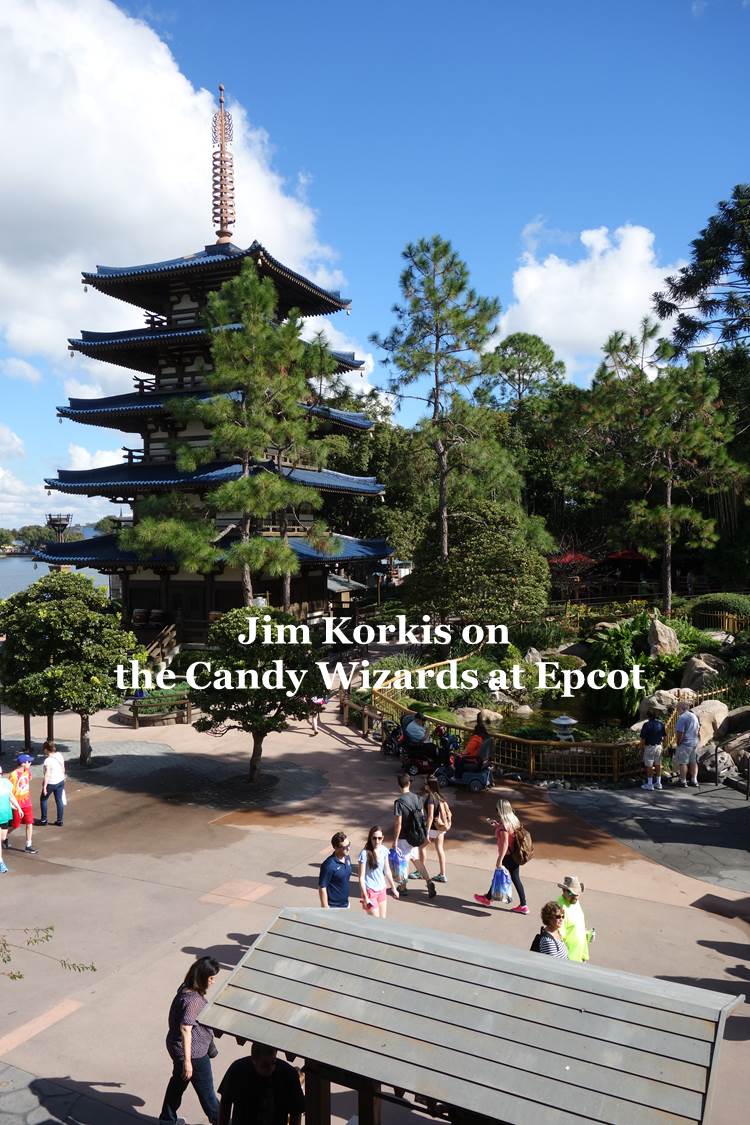A Friday Visit with Jim Korkis: The Candy Wizards at Epcot
By Dave Shute
Welcome back to Fridays with Jim Korkis! Jim, the dean of Disney historians and author of Jim’s Gems in The easy Guide, writes about Walt Disney World history every Friday on yourfirstvisit.net.
THE CANDY WIZARDS AT EPCOT
By Jim Korkis
In the days of the Qin Dynasty, nearly 2,400 years ago, the son of a poor Chinese scholar fell in love with a wealthy nobleman’s daughter.
His heart ached for the lovely maid but his head told him he could never marry without money to support an aristocratic bride. Remembering an old pastime his mother practiced, the young man began to toy with bits of rice-flour dough.
With his thoughts focused on his beloved, his hands fashioned ornate sculpture from the dough. Horses, unicorns and fanciful beasts sprang from the mixture.
Soon the youth was attracting crowds of onlookers fascinated by the beautiful wonders he created. In time, the young artist was able to earn his fortune and eventually the hand of the girl he loved.
This is the legend of Amezaiku, a candy art sculpture craft passed on orally from generation to generation through China and Japan. Currently, there are only fifteen people officially trained in the art, which is reminiscent of glass blowing.
Amezaiku, which translates as “sweet candy craft,” is only one of many endangered traditions. It is also sometimes referred to as “zinen houni” or “dream fantasy”.
A rice starch syrup is boiled until it becomes dough-like, malleable and transparent, looking very much like taffy. It is heated to roughly two hundred degrees over charcoal to make it that pliable. Next it is divided into small portions and kneaded and pulled into small balls. During this process, it takes on a pure-white color and often the artist would add a food color like pink, blue or green. The ball is placed on the end of small chopstick.
The artist must then work quickly to form the animal figures at the tip of a chopstick, using tiny candy scissors, tweezers and his fingers. The artist would also use a hand fan to occasionally cool and harden portions. Further decoration and detail is painted on the candy creature with edible dye food colorings.
Animals and insects are common shapes created by Amezaiku to delight younger children.
The Japan pavilion in World Showcase was home to two of the top Amezaiku artists working in the United States.
Masaji Terasawa, a native of Osaka, began working at Epcot in the 1980s. He began as a street performer in Japan and then moved to the Los Angeles area in the early 1970s. At Epcot, he would sometimes perform blindfolded or dance to taped music in slow rhythmic movements similar to traditional Tai Ji Quan.
He is considered a master of the art and trained Shinobu “Shan” Ichiyanagi for three years as his apprentice. Terasawa remains a much in-demand performer at schools, festivals, private parties and other events.
Terasawa said, “I like to show traditional Japanese art with humor and audience participation.”
Miyuki Sugimori first appeared at the pavilion in 1996 and continued working until her final show November 23, 2013. From Tokyo, Miyuki learned the craft starting in 1989 from her grandfather Mr. Kinura, who was a renowned candy artist.
She remains the first and only woman to receive training in Amezaiku in Japan. She has a daughter, Shido, and when asked by a guest if she plans on teaching her daughter this gift, she replied, “no, she cries because her hands hurt” (from the hot temperature).
The “stage” for these candy wizards was a simple cart located outside the front entrance of the Mitsukoshi department store. The cart was equipped with heating elements to keep the candy pliable and also had fans to cool down the finished hot pieces and set the design before it would be handed to guests who had gathered around to watch the performance.
While the artists often sculpted frogs, swans, alligators, tigers, elephants and more, many guests requested winged dragons and unicorns. The candy was edible but many guests tried to preserve the art in a clear plastic bag kept away from heat.
* * * * *
Thanks, Jim. Come back next Friday for even more from Jim Korkis!
In the meantime, check out his books, including Secret Stories of Walt Disney World: Things You Never You Never Knew, which reprints much material first written for this site, and The Vault of Walt: Volume 4, and his contributions to The easy Guide to Your First Walt Disney World Visit, all published by Theme Park Press.
Follow yourfirstvisit.net on Facebook or Google+ or Twitter or Pinterest!!




0 comments
Comment by typing in the form below.
Leave a Comment | Ask a Question | Note a Problem